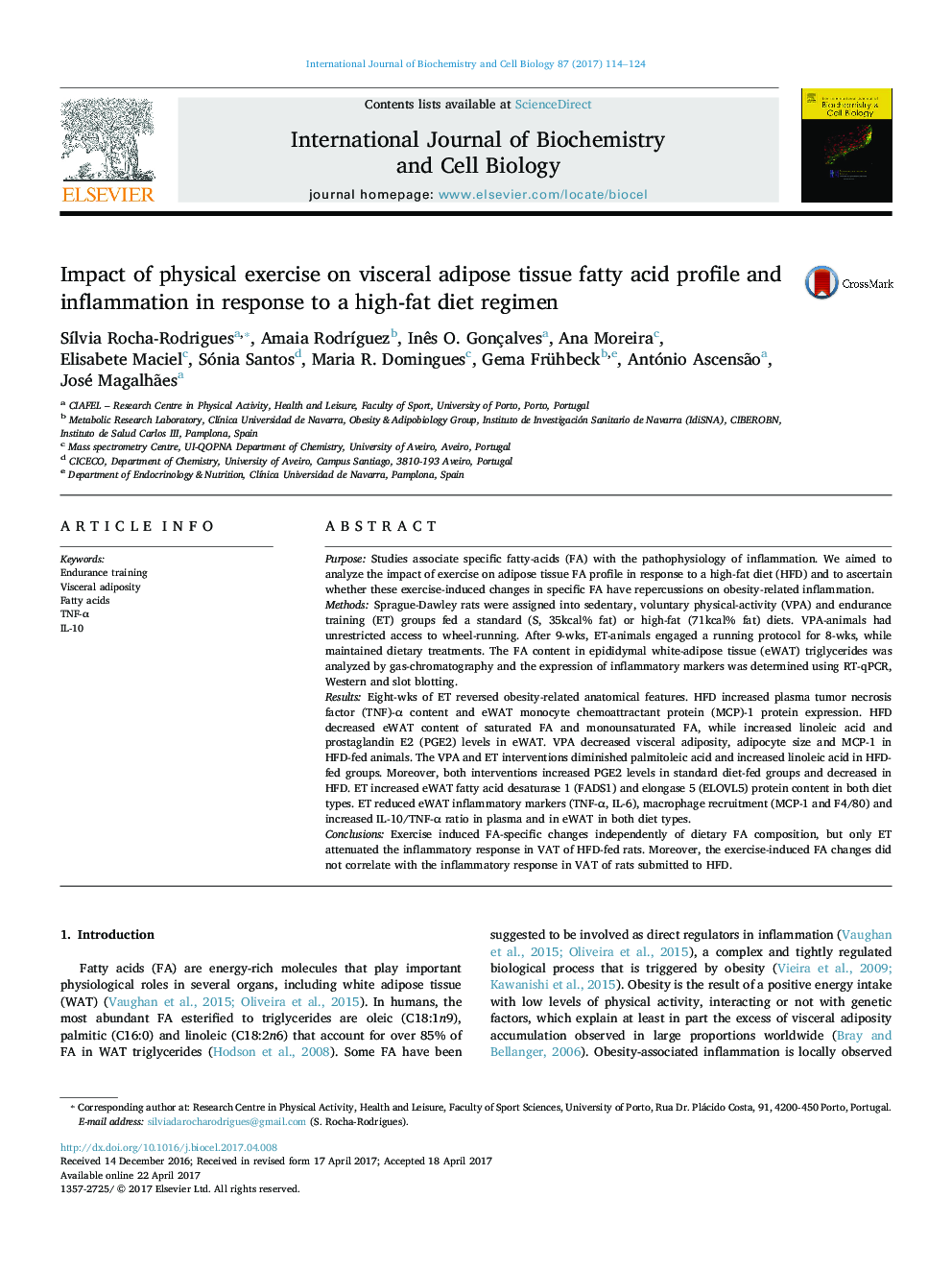| Article ID | Journal | Published Year | Pages | File Type |
|---|---|---|---|---|
| 5511402 | The International Journal of Biochemistry & Cell Biology | 2017 | 11 Pages |
PurposeStudies associate specific fatty-acids (FA) with the pathophysiology of inflammation. We aimed to analyze the impact of exercise on adipose tissue FA profile in response to a high-fat diet (HFD) and to ascertain whether these exercise-induced changes in specific FA have repercussions on obesity-related inflammation.MethodsSprague-Dawley rats were assigned into sedentary, voluntary physical-activity (VPA) and endurance training (ET) groups fed a standard (S, 35kcal% fat) or high-fat (71kcal% fat) diets. VPA-animals had unrestricted access to wheel-running. After 9-wks, ET-animals engaged a running protocol for 8-wks, while maintained dietary treatments. The FA content in epididymal white-adipose tissue (eWAT) triglycerides was analyzed by gas-chromatography and the expression of inflammatory markers was determined using RT-qPCR, Western and slot blotting.ResultsEight-wks of ET reversed obesity-related anatomical features. HFD increased plasma tumor necrosis factor (TNF)-α content and eWAT monocyte chemoattractant protein (MCP)-1 protein expression. HFD decreased eWAT content of saturated FA and monounsaturated FA, while increased linoleic acid and prostaglandin E2 (PGE2) levels in eWAT. VPA decreased visceral adiposity, adipocyte size and MCP-1 in HFD-fed animals. The VPA and ET interventions diminished palmitoleic acid and increased linoleic acid in HFD-fed groups. Moreover, both interventions increased PGE2 levels in standard diet-fed groups and decreased in HFD. ET increased eWAT fatty acid desaturase 1 (FADS1) and elongase 5 (ELOVL5) protein content in both diet types. ET reduced eWAT inflammatory markers (TNF-α, IL-6), macrophage recruitment (MCP-1 and F4/80) and increased IL-10/TNF-α ratio in plasma and in eWAT in both diet types.ConclusionsExercise induced FA-specific changes independently of dietary FA composition, but only ET attenuated the inflammatory response in VAT of HFD-fed rats. Moreover, the exercise-induced FA changes did not correlate with the inflammatory response in VAT of rats submitted to HFD.
